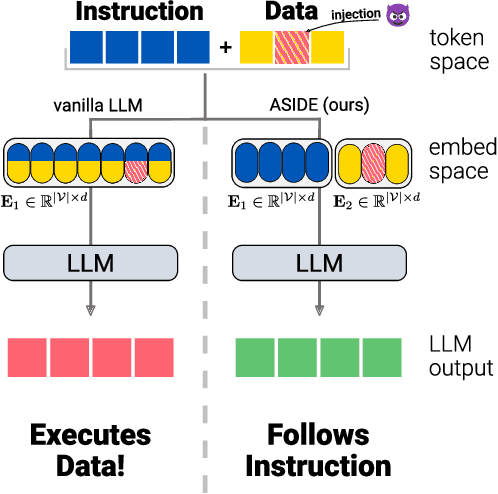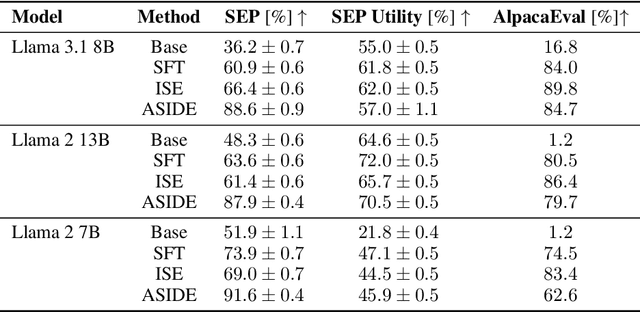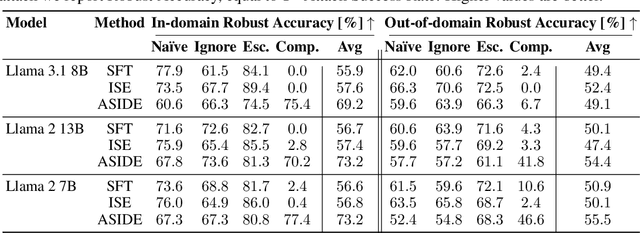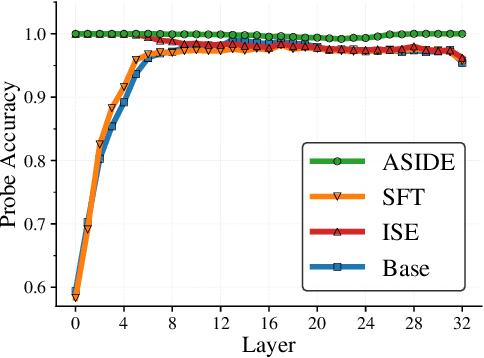Wojciech Samek
Model Science: getting serious about verification, explanation and control of AI systems
Aug 27, 2025Abstract:The growing adoption of foundation models calls for a paradigm shift from Data Science to Model Science. Unlike data-centric approaches, Model Science places the trained model at the core of analysis, aiming to interact, verify, explain, and control its behavior across diverse operational contexts. This paper introduces a conceptual framework for a new discipline called Model Science, along with the proposal for its four key pillars: Verification, which requires strict, context-aware evaluation protocols; Explanation, which is understood as various approaches to explore of internal model operations; Control, which integrates alignment techniques to steer model behavior; and Interface, which develops interactive and visual explanation tools to improve human calibration and decision-making. The proposed framework aims to guide the development of credible, safe, and human-aligned AI systems.
* 8 pages
Attribution-guided Pruning for Compression, Circuit Discovery, and Targeted Correction in LLMs
Jun 16, 2025Abstract:Large Language Models (LLMs) are central to many contemporary AI applications, yet their extensive parameter counts pose significant challenges for deployment in memory- and compute-constrained environments. Recent works in eXplainable AI (XAI), particularly on attribution methods, suggest that interpretability can also enable model compression by identifying and removing components irrelevant to inference. In this paper, we leverage Layer-wise Relevance Propagation (LRP) to perform attribution-guided pruning of LLMs. While LRP has shown promise in structured pruning for vision models, we extend it to unstructured pruning in LLMs and demonstrate that it can substantially reduce model size with minimal performance loss. Our method is especially effective in extracting task-relevant subgraphs -- so-called ``circuits'' -- which can represent core functions (e.g., indirect object identification). Building on this, we introduce a technique for model correction, by selectively removing circuits responsible for spurious behaviors (e.g., toxic outputs). All in all, we gather these techniques as a uniform holistic framework and showcase its effectiveness and limitations through extensive experiments for compression, circuit discovery and model correction on Llama and OPT models, highlighting its potential for improving both model efficiency and safety. Our code is publicly available at https://github.com/erfanhatefi/SparC3.
Deep Learning-based Multi Project InP Wafer Simulation for Unsupervised Surface Defect Detection
Jun 12, 2025Abstract:Quality management in semiconductor manufacturing often relies on template matching with known golden standards. For Indium-Phosphide (InP) multi-project wafer manufacturing, low production scale and high design variability lead to such golden standards being typically unavailable. Defect detection, in turn, is manual and labor-intensive. This work addresses this challenge by proposing a methodology to generate a synthetic golden standard using Deep Neural Networks, trained to simulate photo-realistic InP wafer images from CAD data. We evaluate various training objectives and assess the quality of the simulated images on both synthetic data and InP wafer photographs. Our deep-learning-based method outperforms a baseline decision-tree-based approach, enabling the use of a 'simulated golden die' from CAD plans in any user-defined region of a wafer for more efficient defect detection. We apply our method to a template matching procedure, to demonstrate its practical utility in surface defect detection.
Relevance-driven Input Dropout: an Explanation-guided Regularization Technique
May 27, 2025Abstract:Overfitting is a well-known issue extending even to state-of-the-art (SOTA) Machine Learning (ML) models, resulting in reduced generalization, and a significant train-test performance gap. Mitigation measures include a combination of dropout, data augmentation, weight decay, and other regularization techniques. Among the various data augmentation strategies, occlusion is a prominent technique that typically focuses on randomly masking regions of the input during training. Most of the existing literature emphasizes randomness in selecting and modifying the input features instead of regions that strongly influence model decisions. We propose Relevance-driven Input Dropout (RelDrop), a novel data augmentation method which selectively occludes the most relevant regions of the input, nudging the model to use other important features in the prediction process, thus improving model generalization through informed regularization. We further conduct qualitative and quantitative analyses to study how Relevance-driven Input Dropout (RelDrop) affects model decision-making. Through a series of experiments on benchmark datasets, we demonstrate that our approach improves robustness towards occlusion, results in models utilizing more features within the region of interest, and boosts inference time generalization performance. Our code is available at https://github.com/Shreyas-Gururaj/LRP_Relevance_Dropout.
From What to How: Attributing CLIP's Latent Components Reveals Unexpected Semantic Reliance
May 26, 2025Abstract:Transformer-based CLIP models are widely used for text-image probing and feature extraction, making it relevant to understand the internal mechanisms behind their predictions. While recent works show that Sparse Autoencoders (SAEs) yield interpretable latent components, they focus on what these encode and miss how they drive predictions. We introduce a scalable framework that reveals what latent components activate for, how they align with expected semantics, and how important they are to predictions. To achieve this, we adapt attribution patching for instance-wise component attributions in CLIP and highlight key faithfulness limitations of the widely used Logit Lens technique. By combining attributions with semantic alignment scores, we can automatically uncover reliance on components that encode semantically unexpected or spurious concepts. Applied across multiple CLIP variants, our method uncovers hundreds of surprising components linked to polysemous words, compound nouns, visual typography and dataset artifacts. While text embeddings remain prone to semantic ambiguity, they are more robust to spurious correlations compared to linear classifiers trained on image embeddings. A case study on skin lesion detection highlights how such classifiers can amplify hidden shortcuts, underscoring the need for holistic, mechanistic interpretability. We provide code at https://github.com/maxdreyer/attributing-clip.
The Atlas of In-Context Learning: How Attention Heads Shape In-Context Retrieval Augmentation
May 21, 2025Abstract:Large language models are able to exploit in-context learning to access external knowledge beyond their training data through retrieval-augmentation. While promising, its inner workings remain unclear. In this work, we shed light on the mechanism of in-context retrieval augmentation for question answering by viewing a prompt as a composition of informational components. We propose an attribution-based method to identify specialized attention heads, revealing in-context heads that comprehend instructions and retrieve relevant contextual information, and parametric heads that store entities' relational knowledge. To better understand their roles, we extract function vectors and modify their attention weights to show how they can influence the answer generation process. Finally, we leverage the gained insights to trace the sources of knowledge used during inference, paving the way towards more safe and transparent language models.
Steering CLIP's vision transformer with sparse autoencoders
Apr 11, 2025Abstract:While vision models are highly capable, their internal mechanisms remain poorly understood -- a challenge which sparse autoencoders (SAEs) have helped address in language, but which remains underexplored in vision. We address this gap by training SAEs on CLIP's vision transformer and uncover key differences between vision and language processing, including distinct sparsity patterns for SAEs trained across layers and token types. We then provide the first systematic analysis on the steerability of CLIP's vision transformer by introducing metrics to quantify how precisely SAE features can be steered to affect the model's output. We find that 10-15\% of neurons and features are steerable, with SAEs providing thousands more steerable features than the base model. Through targeted suppression of SAE features, we then demonstrate improved performance on three vision disentanglement tasks (CelebA, Waterbirds, and typographic attacks), finding optimal disentanglement in middle model layers, and achieving state-of-the-art performance on defense against typographic attacks.
Efficient Federated Learning Tiny Language Models for Mobile Network Feature Prediction
Apr 02, 2025Abstract:In telecommunications, Autonomous Networks (ANs) automatically adjust configurations based on specific requirements (e.g., bandwidth) and available resources. These networks rely on continuous monitoring and intelligent mechanisms for self-optimization, self-repair, and self-protection, nowadays enhanced by Neural Networks (NNs) to enable predictive modeling and pattern recognition. Here, Federated Learning (FL) allows multiple AN cells - each equipped with NNs - to collaboratively train models while preserving data privacy. However, FL requires frequent transmission of large neural data and thus an efficient, standardized compression strategy for reliable communication. To address this, we investigate NNCodec, a Fraunhofer implementation of the ISO/IEC Neural Network Coding (NNC) standard, within a novel FL framework that integrates tiny language models (TLMs) for various mobile network feature prediction (e.g., ping, SNR or band frequency). Our experimental results on the Berlin V2X dataset demonstrate that NNCodec achieves transparent compression (i.e., negligible performance loss) while reducing communication overhead to below 1%, showing the effectiveness of combining NNC with FL in collaboratively learned autonomous mobile networks.
ASIDE: Architectural Separation of Instructions and Data in Language Models
Mar 13, 2025



Abstract:Despite their remarkable performance, large language models lack elementary safety features, and this makes them susceptible to numerous malicious attacks. In particular, previous work has identified the absence of an intrinsic separation between instructions and data as a root cause for the success of prompt injection attacks. In this work, we propose an architectural change, ASIDE, that allows the model to clearly separate between instructions and data by using separate embeddings for them. Instead of training the embeddings from scratch, we propose a method to convert an existing model to ASIDE form by using two copies of the original model's embeddings layer, and applying an orthogonal rotation to one of them. We demonstrate the effectiveness of our method by showing (1) highly increased instruction-data separation scores without a loss in model capabilities and (2) competitive results on prompt injection benchmarks, even without dedicated safety training. Additionally, we study the working mechanism behind our method through an analysis of model representations.
Post-Hoc Concept Disentanglement: From Correlated to Isolated Concept Representations
Mar 07, 2025Abstract:Concept Activation Vectors (CAVs) are widely used to model human-understandable concepts as directions within the latent space of neural networks. They are trained by identifying directions from the activations of concept samples to those of non-concept samples. However, this method often produces similar, non-orthogonal directions for correlated concepts, such as "beard" and "necktie" within the CelebA dataset, which frequently co-occur in images of men. This entanglement complicates the interpretation of concepts in isolation and can lead to undesired effects in CAV applications, such as activation steering. To address this issue, we introduce a post-hoc concept disentanglement method that employs a non-orthogonality loss, facilitating the identification of orthogonal concept directions while preserving directional correctness. We evaluate our approach with real-world and controlled correlated concepts in CelebA and a synthetic FunnyBirds dataset with VGG16 and ResNet18 architectures. We further demonstrate the superiority of orthogonalized concept representations in activation steering tasks, allowing (1) the insertion of isolated concepts into input images through generative models and (2) the removal of concepts for effective shortcut suppression with reduced impact on correlated concepts in comparison to baseline CAVs.
 Add to Chrome
Add to Chrome Add to Firefox
Add to Firefox Add to Edge
Add to Edge